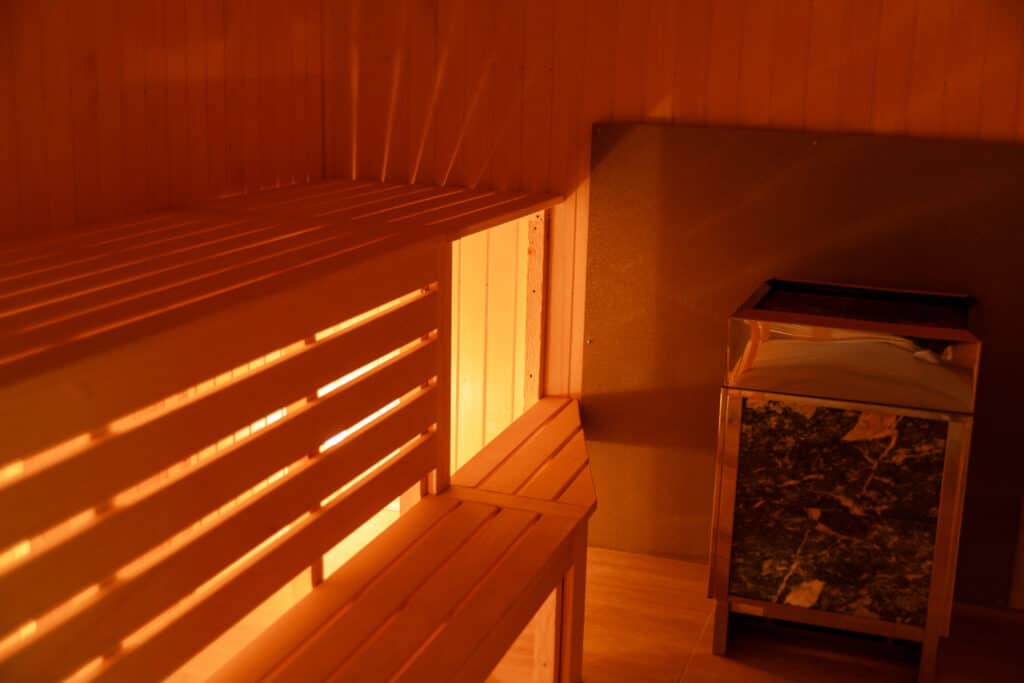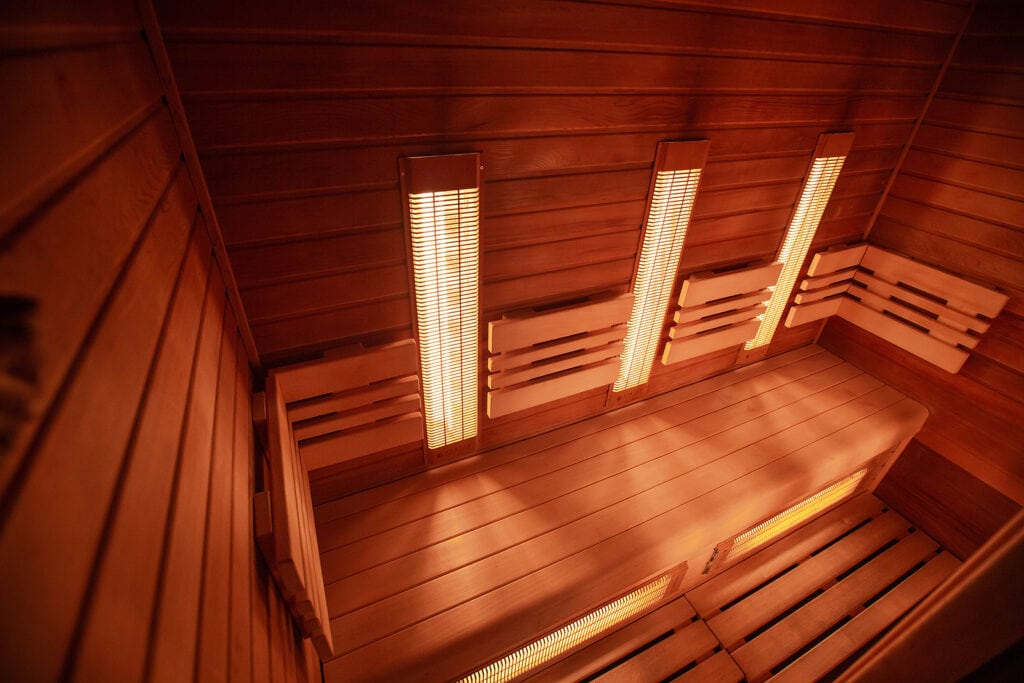Infrared Saunas Use Electricity Use
I've noticed that infrared saunas have become quite popular lately, and I've been curious about their energy consumption. These saunas are known for their various health benefits, such as reducing stress, enhancing circulation, and aiding in detoxification.
However, like many others, I've wondered about the electricity they consume. In this guide, I aim to delve into the energy usage of infrared saunas, and the factors that affect it, and share some tips on how to make them more energy-efficient.
How Do Infrared Saunas Work?
To gain a deeper insight into the energy efficiency of infrared saunas, it's essential to first comprehend their operational mechanics. In contrast to conventional saunas that rely on heating the ambient air, infrared saunas employ specialized infrared heaters.
These heaters emit radiant heat that penetrates your body directly, creating a unique therapeutic experience. This innovative approach is renowned for its potential to provide numerous health advantages, all while operating at significantly lower temperatures, which ultimately contributes to their exceptional energy efficiency.
Infrared saunas operate by utilizing the electromagnetic spectrum, specifically the far-infrared segment. When these heaters emit far-infrared waves, they're capable of efficiently and deeply penetrating the skin's surface
This penetration generates heat within your body, warming you up from the inside out. This not only feels more comfortable than the intense heat of traditional saunas but also offers potential health benefits such as improved circulation, detoxification, pain relief, and relaxation.
Furthermore, the lower operating temperatures of infrared saunas compared to their traditional counterparts make them remarkably energy-efficient. Traditional saunas often require high temperatures to heat the air, which can consume a substantial amount of energy.
In contrast, infrared saunas can provide similar therapeutic benefits at lower temperatures, requiring less energy to maintain the desired heat levels. This combination of targeted radiant heat and reduced energy consumption makes infrared saunas an appealing choice for those seeking a more sustainable and health-conscious sauna experience.

Understanding Energy Consumption
To gain a comprehensive understanding of the energy consumption associated with infrared saunas, it's essential to consider a range of factors that influence their electricity usage. By examining these factors in detail, you can make informed estimates regarding the electricity consumption of your particular sauna setup.
Variety of Infrared Saunas
In the realm of infrared saunas, there are three primary types: near-infrared, mid-infrared, and far-infrared. Each type varies in its energy efficiency due to differences in operational mechanisms:
- Far-Infrared Saunas: These are the most prevalent and energy-efficient among the three types. Far-infrared saunas operate at lower temperatures and can penetrate the body more deeply, making them efficient in terms of electricity consumption.
- Mid-Infrared Saunas: Mid-infrared saunas typically require more electricity as they operate at higher temperatures. The increased temperature can enhance the sensation of heat but comes at the cost of higher energy consumption.
- Near-Infrared Saunas: Near-infrared saunas are often utilized for localized therapy and are the most energy-efficient among the three types. They consume the least amount of electricity due to their focused heating.
Heating Elements
Another significant factor impacting energy consumption is the type and number of heating elements within the sauna. Two common heating element types are ceramic and carbon heaters. Carbon heaters are renowned for their energy efficiency as they heat up rapidly and distribute heat evenly throughout the sauna, contributing to overall lower energy usage.
Size and Insulation
The size of your sauna, coupled with its insulation quality, also plays a pivotal role in determining energy consumption. Larger saunas necessitate more energy to heat the entire space, while inadequate insulation can result in heat loss, leading to heightened energy requirements. Therefore, ensuring proper insulation and choosing an appropriately sized sauna can help optimize energy efficiency.
Usage Duration
The duration for which you use your infrared sauna directly correlates with its electricity consumption. Prolonged sauna sessions will naturally consume more electricity. Hence, it's crucial to strike a balance between reaping the therapeutic benefits of sauna usage and effectively managing energy costs.
Temperature Settings
The temperature settings of your sauna are another variable to consider. Higher sauna temperatures will demand more electricity to maintain, so it's prudent to select a temperature that is comfortable for your needs while being mindful of energy consumption.
Calculating Energy Consumption
To gain a comprehensive understanding of the energy consumption associated with your infrared sauna, it's important to consider several key factors and calculations:
Power Rating
Begin by examining the sauna's power rating, typically measured in kilowatts (kW). This rating signifies the amount of electricity the sauna consumes per hour of operation. For instance, if your sauna has a power rating of 3 kW, it will utilize 3 kilowatt-hours (kWh) of electricity in one hour.
Daily Usage
Next, assess how frequently you intend to use the sauna each day and for how long during each session. By multiplying the sauna's power rating by the number of hours you plan to use it daily, you can calculate the daily energy consumption. For example, if you use your 3 kW sauna for 2 hours a day, the daily energy consumption would be 3 kW x 2 hours = 6 kWh.
Monthly and Annual Consumption
To estimate your monthly and annual electricity costs related to the sauna, you should extend the daily energy consumption over a larger time frame. Here's how to calculate these estimates:
- Monthly Consumption: Multiply the daily energy consumption by the number of days in a month. Keep in mind that some months have varying numbers of days, so you may want to use an average, such as 30.4 days per month for a typical month.
- Annual Consumption: For the annual estimate, multiply the daily energy consumption by the number of days in a year. Consider any seasonal variations in usage; you might use the sauna more frequently during cold months and less during warmer months.

Factors Affecting Electricity Costs
When considering the electricity costs of operating an infrared sauna, it's important to recognize that several external factors can influence these costs. These factors provide valuable insights into the overall financial implications of sauna usage:
Electricity Rates
The foremost factor affecting your sauna's electricity costs is the prevailing electricity rates in your area. These rates can vary significantly depending on your location and the pricing structure established by your utility provider. It's crucial to stay informed about your local electricity rates, as they serve as the foundation for estimating the financial impact of your sauna sessions accurately.
Location and Climate
Your geographical location and climate conditions can exert a substantial influence on your sauna usage patterns. In regions with colder climates, individuals may find the allure of a warm sauna particularly inviting, potentially leading to more frequent use.
Consequently, colder locales may experience higher energy costs associated with sauna operation. Conversely, in warmer areas, sauna usage may be less frequent, resulting in lower electricity expenses.
Sauna Efficiency
The efficiency of your sauna equipment is a pivotal factor in determining energy consumption and associated costs. High-quality saunas are often designed with features that enhance energy efficiency. These features may include superior insulation, which minimizes heat loss, and efficient heating elements, such as carbon heaters.
Saunas with these attributes tend to be more energy-efficient, resulting in lower electricity bills. Therefore, when choosing an infrared sauna, it's advisable to opt for one with good insulation and efficient heating elements to maximize energy efficiency and minimize operational costs.
Tips for Energy-Efficient Infrared Sauna Use
To enhance the energy efficiency of your infrared sauna usage while still reaping its therapeutic benefits, consider implementing the following energy-saving strategies:
Strategic Preheating
Before stepping into your sauna, preheat it for approximately 10-15 minutes. This allows the sauna to reach your desired temperature efficiently. Once you're inside and enjoying your session, there's no need to keep it running. This practice minimizes energy wastage and ensures you only use electricity when necessary.
Seal Gaps and Insulate
Pay close attention to the insulation and sealing of your sauna space. Ensure that it is well-insulated to retain heat effectively. Check for any gaps or leaks that might allow heat to escape. Proper insulation and a well-sealed sauna can significantly reduce energy waste, allowing the sauna to maintain its temperature more efficiently.
Optimal Temperature Settings
Experiment with different temperature settings to discover the lowest comfortable setting that still provides the desired sauna experience. Lower temperatures consume less electricity while still offering the benefits of infrared therapy. Finding the right balance between comfort and energy efficiency is key.
Use Timers and Smart Controls
Consider using timers or smart controls for your sauna. Set a specific duration for your sessions to prevent overuse and unnecessary energy consumption. Timers can automatically shut off the sauna when your session reaches its predetermined end, helping you manage energy costs effectively.
Regular Maintenance
Maintaining your sauna is crucial for long-term energy efficiency. Regularly clean the heating elements to ensure they function optimally. Inspect the insulation and seals for any wear or damage and address any issues promptly. A well-maintained sauna operates more efficiently and can extend its lifespan.
Sustainability and Carbon Footprint
When evaluating the use of an infrared sauna, it's crucial to take into account its sustainability implications and carbon footprint. While these saunas are known for their energy efficiency, the electricity they consume can still have environmental consequences. To mitigate this impact and promote a more eco-conscious approach to sauna usage, consider the following options:
Renewable Energy Sources
One way to reduce the environmental impact of your infrared sauna is by powering it with renewable energy sources. By utilizing clean energy generated from sources like solar panels, wind turbines, or hydropower, you can significantly decrease the carbon footprint associated with your sauna sessions. Transitioning to renewable energy aligns with sustainable practices and contributes to a greener and more environmentally responsible approach to sauna use.
Carbon Offsetting
Another effective strategy is to offset the carbon emissions produced during sauna operation. Carbon offset programs allow you to invest in projects that reduce or capture an equivalent amount of greenhouse gas emissions elsewhere. These projects may include reforestation efforts, renewable energy initiatives, or methane capture projects. By participating in carbon offset programs, you can balance out the environmental impact of your sauna use, making it more environmentally sustainable.
Energy-Efficient Sauna Models
Consider opting for an energy-efficient infrared sauna model with advanced insulation and heating elements. Energy-efficient saunas are designed to minimize electricity consumption, further reducing their carbon footprint. By selecting a sauna with a focus on sustainability, you can enjoy the benefits of infrared therapy while being environmentally conscious.
Monitoring and Conservation
Regularly monitor your sauna's energy consumption and look for opportunities to conserve energy. This includes following the energy-saving tips mentioned earlier and being mindful of your usage patterns. Small adjustments, such as reducing session durations or lowering temperature settings, can collectively contribute to a more sustainable sauna experience.
Infrared Saunas Use Electricity Use FAQs
Q: Do infrared saunas use a lot of electricity?
A: The electricity consumption of an infrared sauna can vary depending on its size, design, and usage patterns. Generally, infrared saunas are designed to be energy-efficient compared to traditional saunas, but they still use a noticeable amount of electricity. Expect the electricity consumption to be similar to that of other household appliances like a washing machine or dryer. Your energy bill will depend on factors such as the sauna's wattage, how long you use it, and your local electricity rates.
Q: What power does an infrared sauna use?
A: The power rating of an infrared sauna can vary widely, typically ranging from 1000 watts (1 kW) to 3000 watts (3 kW) or more. Smaller, portable saunas often use less power, while larger, more luxurious models may have higher wattage. The specific power usage will depend on the sauna's size and the number of infrared heaters it contains. It's important to check the sauna's specifications to know its exact power rating.
Q: Do saunas use electricity?
A: Yes, saunas, both traditional and infrared, require electricity to function. Traditional saunas use electricity to heat rocks, which then generate heat in the sauna room when water is poured on them. Infrared saunas use electricity to power the infrared heaters that emit infrared radiation to heat the body directly. So, electricity is an essential component for the operation of saunas.
Q: Does an infrared sauna need its own circuit?
A: Whether or not an infrared sauna requires its own dedicated circuit depends on its power requirements and the electrical capacity of your home. Saunas with higher wattage, typically above 2000 watts, often require a dedicated circuit to prevent overloading your home's electrical system. It's crucial to consult with a qualified electrician to assess your sauna's electrical needs and ensure it is safely and properly installed, including whether a dedicated circuit is necessary.
Conclusion
Infrared saunas offer numerous health benefits, but it's crucial to understand their energy consumption and take steps to use them efficiently. By considering factors like sauna type, heating elements, insulation, and temperature settings, you can enjoy the benefits of infrared saunas while managing your electricity costs effectively.
Incorporating energy-saving practices and staying informed about your electricity rates will further enhance your sauna experience. Remember that responsible sauna use not only benefits your well-being but also contributes to a more sustainable future.

